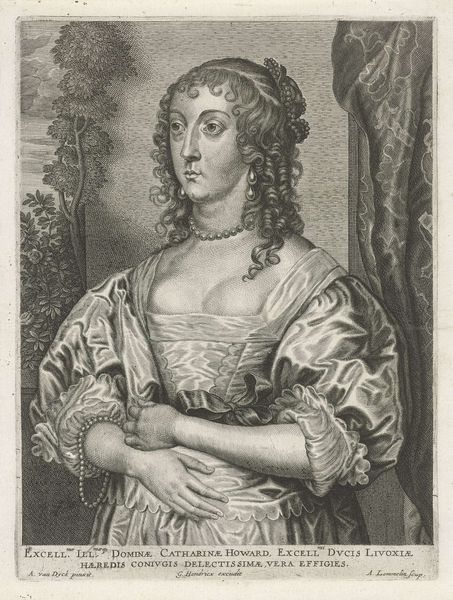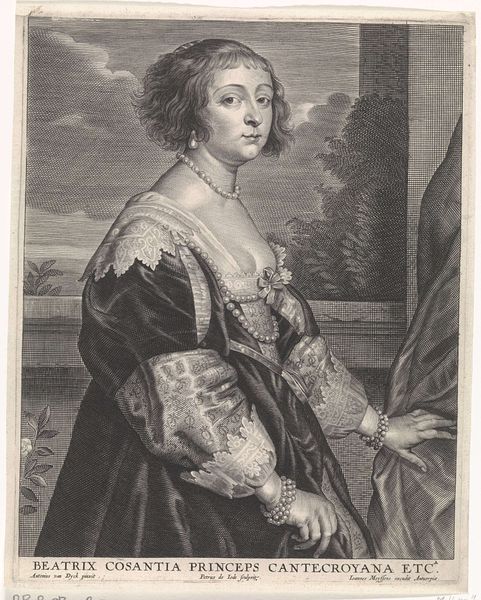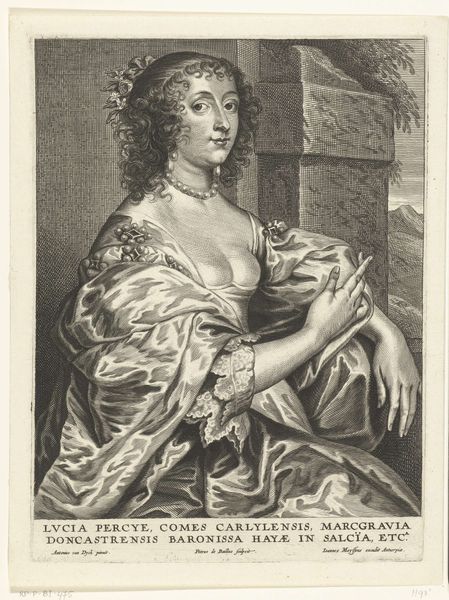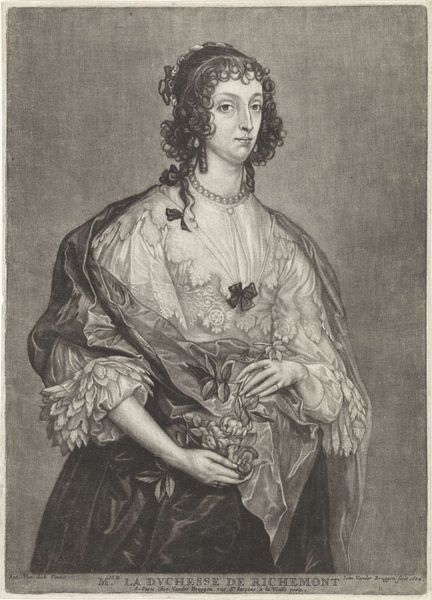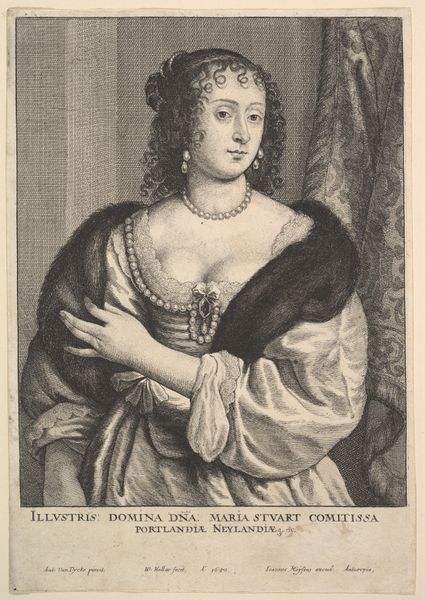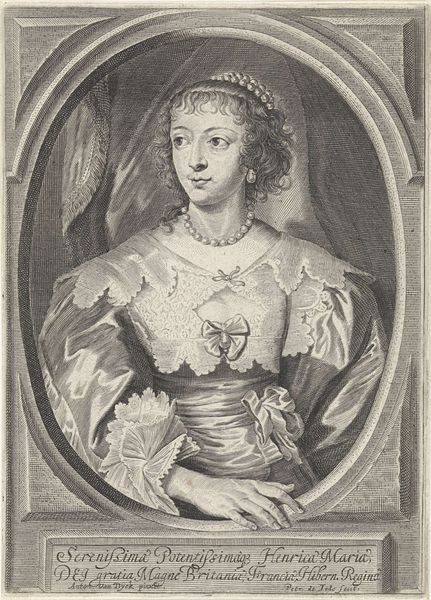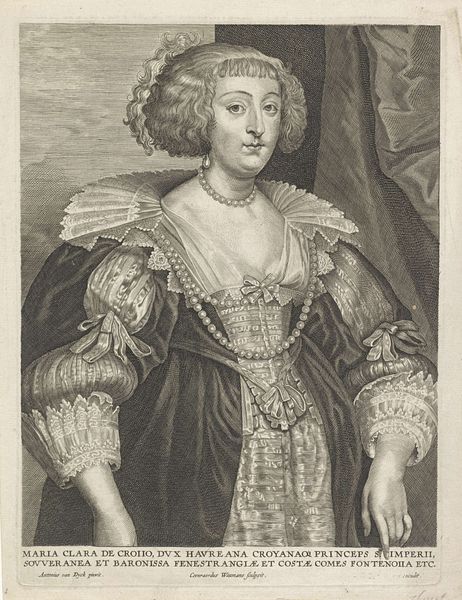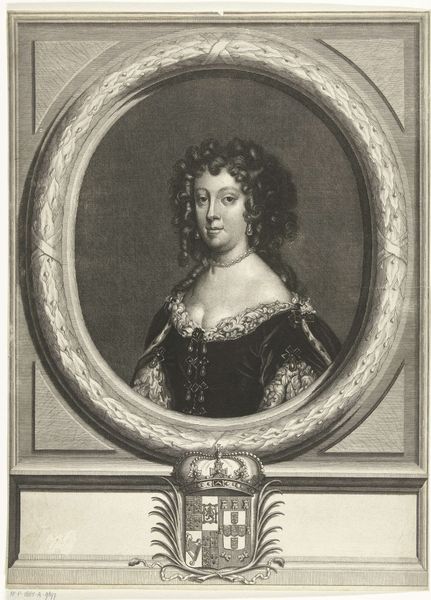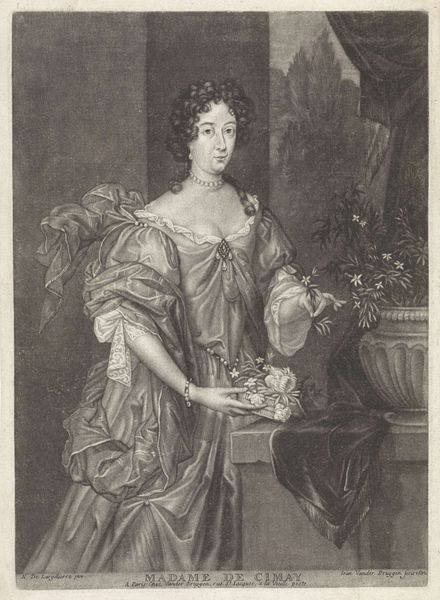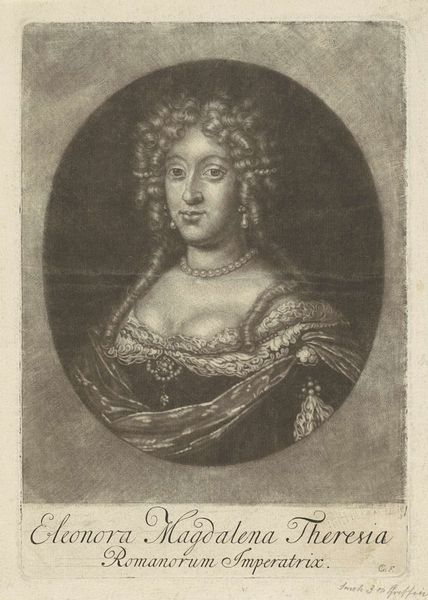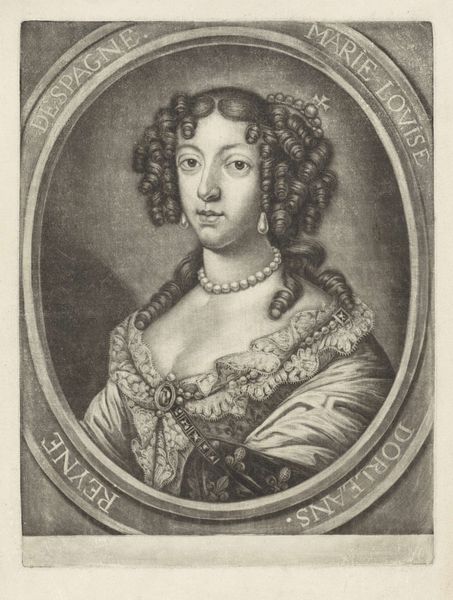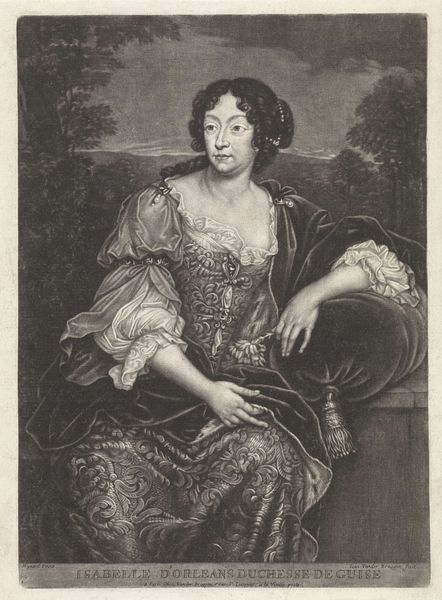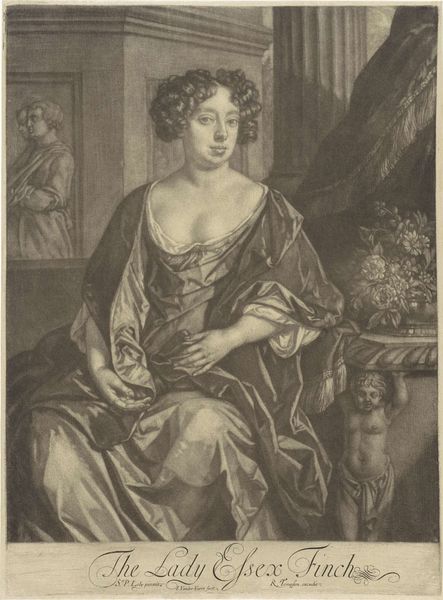
engraving
#
portrait
#
medieval
#
baroque
#
engraving
Dimensions: height 254 mm, width 199 mm
Copyright: Rijks Museum: Open Domain
Editor: This is "Portret van Katherine Howard" by Arnold de Jode, made between 1658 and 1666. It's an engraving, so we're looking at a print. It's quite detailed. The textures in the fabric and the hair... really make the portrait come alive. How do you read this portrait formally? Curator: Precisely. Notice how the artist uses line and form to create a sense of depth despite the print medium. The density of line, especially in the drapery and foliage, provides a rich textural contrast against the smoother surfaces of the face and exposed skin. Note the dynamic baroque swirls that animate this picture and underscore a certain emotional dynamism. What feelings are elicited? Editor: I guess, a kind of contained drama? It is certainly full. It makes the picture engaging beyond the representation of the figure. What about the use of light and shadow? Curator: The engraver masterfully uses hatching and cross-hatching to create gradations of tone. Look at how this technique defines the folds in the gown and shapes the contours of Katherine Howard’s face. The directionality of these lines guides our eye, creating emphasis and modeling. How is this captured mood significant? Editor: Good point. It's all about guiding the viewer. Without knowing too much about the historical context, I find the artist really makes me feel what she might have been feeling. It’s like her emotions have been translated to form. Thanks for expanding how I consider portraits. Curator: Indeed. It is not simply about resemblance but about evoking an emotional and aesthetic response through careful manipulation of the medium and the compositional elements. Looking closely, analyzing carefully – that is how art expands our understanding.
Comments
No comments
Be the first to comment and join the conversation on the ultimate creative platform.
